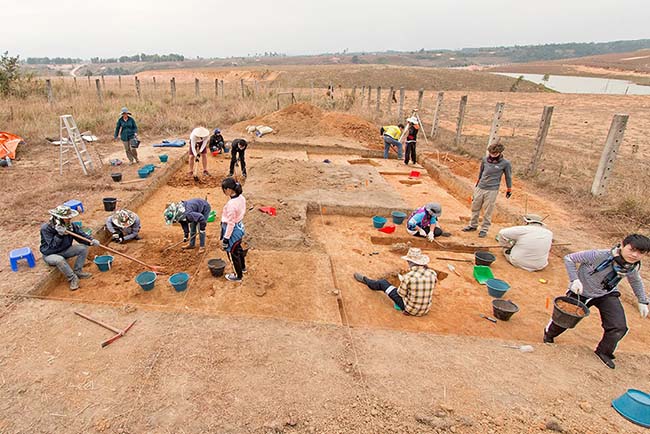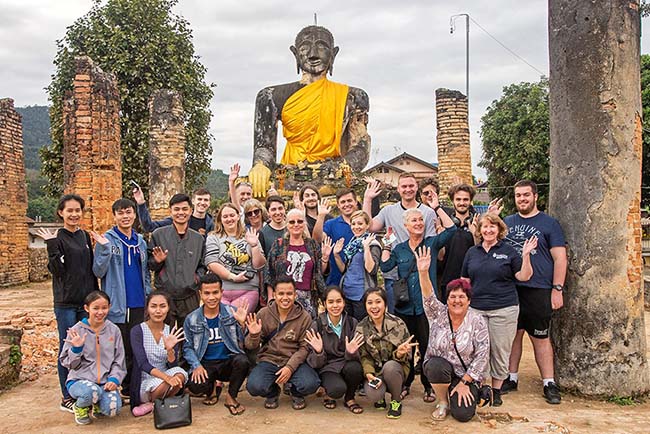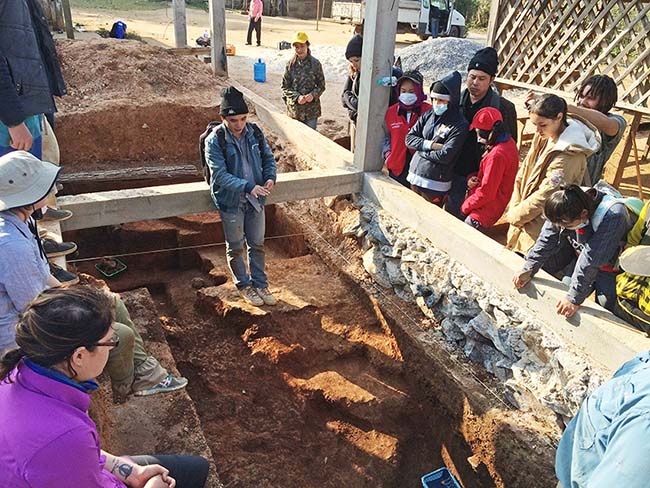New Colombo Plan (NCP) Mobility Students have helped uncover evidence of human inhabitation as far back as 3,000 years or more in the Xieng Khouang Province in Laos.
Over three years, 38 students from James Cook University and students from the National University of Laos (NUoL) worked together on two major archaeological excavation sites at Wat Ban Vieng and Ban Ang Airport on the Plain of Jars. They worked alongside personnel from the Lao Department of National Heritage and local government representatives, with the uncovered artefacts now housed in the Xieng Khouang Provincial Museum.
James Cook University Project Lead, Dr Nigel Chang, said some of the exciting archaeological finds included the uncovering of 41 special artefacts amongst a much larger collection from the Wat Ban Vieng site.
"The collection also included fragments of porcelain and distinctive tobacco smoking pipes that tell us much about the trade and cultural relationships of Xieng Khouang people in the past," said Dr Chang.
"We think, at this stage, that most of our finds date to the Lan Xang period, probably from the 17th century. However, a few artefacts suggest much earlier occupation of the site, including some pottery that may date to the Iron Age (about 2,000 years ago) and a large stone adze that may date to 3,000 or more years ago."
Starting in 2016, this international collaboration exemplifies the goals of the NCP ─ to strengthen Australia's relationships in the Indo-Pacific region and encourage a greater cultural and historical understanding.
While the project provided NCP Mobility Students with hands-on archaeological experience, it also gave them a deeper appreciation and understanding of the rich Laotian culture. The Australian and Lao students involved have learnt together, not only about archaeology and prehistory, but also about each other's culture and language.
The NCP Mobility Students were also able to visit key heritage sites across the country to gain knowledge of how the modern state of Laos developed and its relationship with Australia.
They were able to spend time with NUoL students and school-level students at the Lone Buffalo School. This was mutually beneficial as the Lone Buffalo students had the opportunity to practice their English in a project-based context.
The students also visited several NGOs and other development initiatives to help increase their understanding of how heritage, both archaeological and cultural, can contribute to improving livelihoods and local economies in a developing country.
"The NCP Mobility Program has enabled our students to have an extraordinary travel experience outside of Australia. The NCP not only gives them that experience but allows them to interact in a very different way to standard Australian tourists who visit the region. While it can be a challenging experience for the students, I feel it helps to broaden their horizons and helps them to better understand the reality of where Australia is in the world," said Dr Chang.
Learn more about the NCP Mobility Program.









